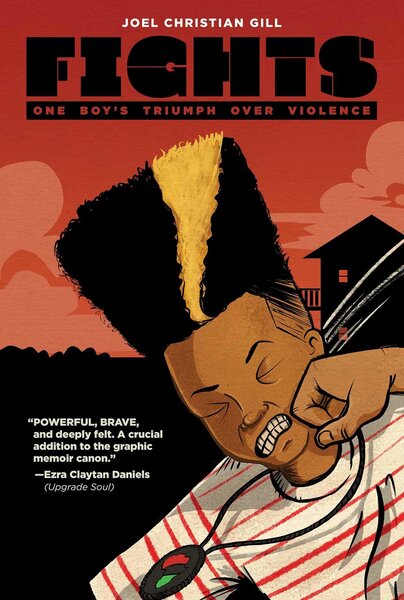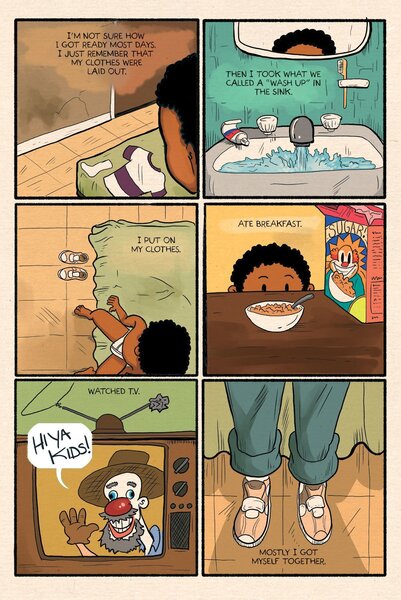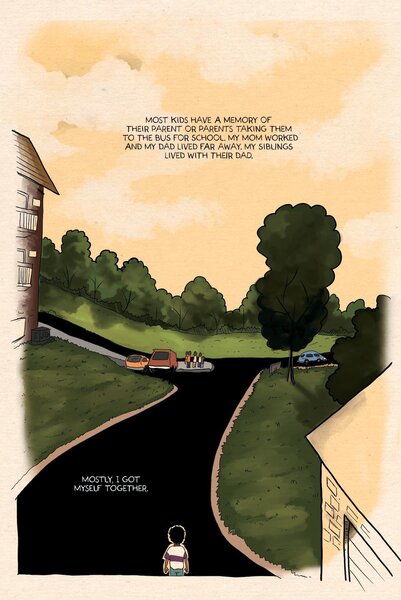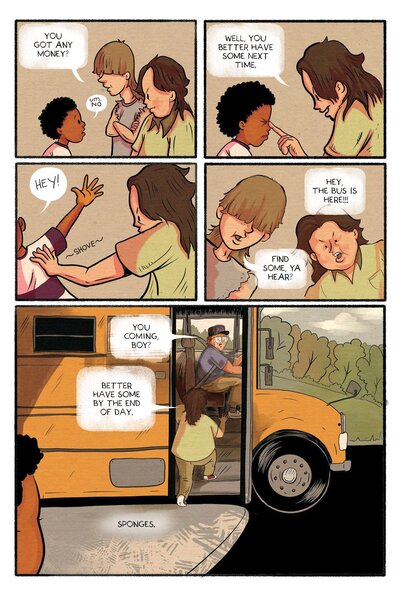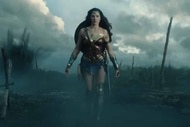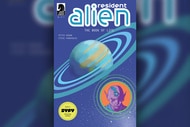Create a free profile to get unlimited access to exclusive videos, sweepstakes, and more!
Indie Comics Spotlight: Joel Christian Gill's memoir 'Fights' is a triumph over childhood abuse
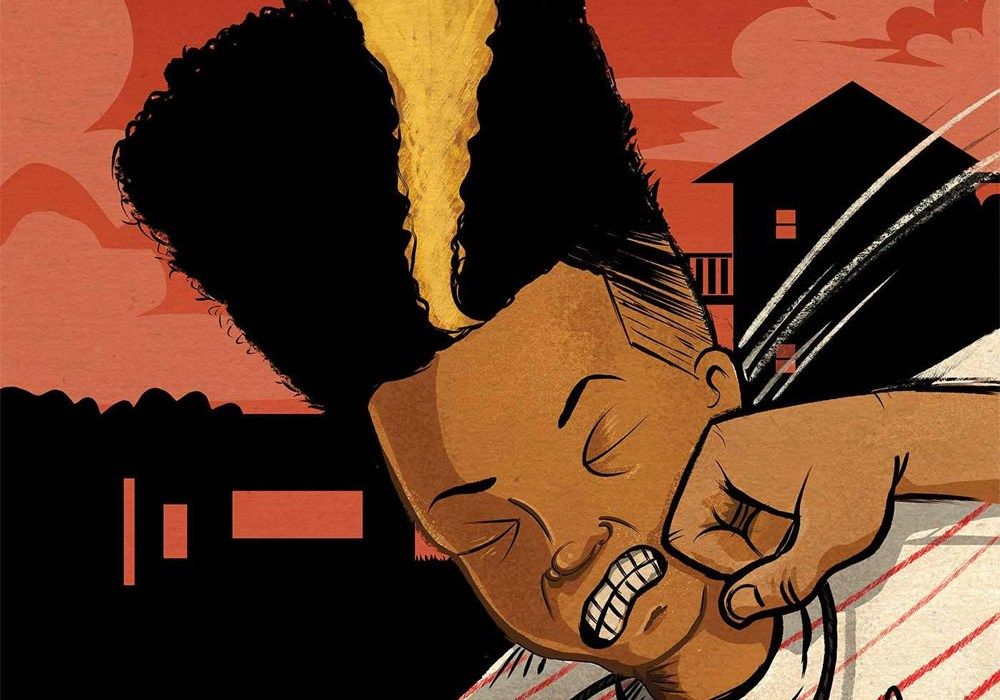
Growing up in the 1980s in the impoverished South, writer and artist Joel Christian Gill would spend hours reading every issue of Mad Magazine and Cracked that he could get his hands on. At that time, his hometown of Martinsville, Virginia, was known for two things: racing and racism. When he was about 13, he moved up to Roanoke, which had a lot more people (give or take 100,000), where there was just as much racism. With no money to buy comics, the ones he did read were often dog eared and battered from the spinner rack at the county store. Only a few blocks from his apartment, his local library became his sanctuary. He loved to draw, and the stories he made up became his escape from an abusive home and bullying at school.
This is the backdrop for Gill's memoir Fights: One Boy's Triumph Over Violence (Oni Press). As the title suggests, the book recounts Gill's life as a shy Black boy coming of age in an uncertain and violent world. At the same time, it doesn't paint him as a victim. Instead, Gill candidly shepherds us through a very emotional and open work, fraught with all of the insecurities of adolescence, trying to find his footing in a world made of quicksand.
Gill is known for historical graphic novels, most notably Strange Fruit and The Talented Tenth series. They chronicled the lives of little known African Americans who impacted American history. (He devoted an entire book to Bass Reeves six years before HBO's Watchmen made the real-life hero a household name). Fights is the first autobiographical novel for Gill. Today, the cartoonist is happily married with several children and works as an Associate Professor of Illustration At Massachusetts College of Art and Design in Boston, where he teaches Color and Illustration to a new generation of comic book creators.
SYFY WIRE spoke with Gill about why he decided to share his story, the gravity of Fights: One Boy's Triumph Over Violence, and why we should focus on the latter and not the former.
What types of stories did you write and draw when you were a child?
Man, I wrote all kinds of stories. I have never told anyone this but when I was about 11 a family member got a typewriter. I would write stories all the time then draw the cover of a comic about that story. I had a story called Ninjkid about a kid who was secretly a ninja and a story about a kid that learned at age 12 that he was from a family of wizards. It was called Wizkid. True facts.
What was the first illustration that you were paid for?
I spent all my time in college as a caricature artist for retail store, at parties, and at events. There are probably thousands of bad and a few good caricatures that I was paid for out in the world.
You've mentioned before that you wanted to go to college for comics but you went for illustration instead. Why?
I wanted to draw comics but there wasn't a program where I am from in Virginia that would lend itself to comics, so I took Graphic Design. I had to take a course in painting and fell in love. I thought that I would be the next Basquiat. So I spent the next 10 years trying and failing to tell stories with my paintings so I went back to trying to tell stories with comics. I always say that I got a library degree in comics and illustration. That means I used my skill of going to the library to enhance my knowledge.
Briefly describe how you transitioned from being an illustrator to being a comics creator?
I was never an illustrator in the traditional sense. I just went from painting to comics. Which seems crazy when I think of it, but I really just wanted to tell stories. Painting wasn't telling stories (well enough) so I went back to trying to tell my own story in comics.
Your graphic novels Strange Fruit, The Talented Tenth, and even your children's book are all historical graphic novels. Why is that your wheelhouse?
When trying to draw my own story, I love to do research, and I ran across the story of Henry Box Brown. I had been struggling trying to tell my own story so when I found this narrative already set up I thought that this was a good way to practice telling a story. So I began selling Strange Fruit (named after the Billie Holiday song) as a mini-comics series. When selling the minis people started telling me other stories. I would use my librarians and my research to tell the next story. Next thing I know I had a whole book!
Do you consider yourself a comic book creator or a historian?
Yes, both. I have spent the last 10 years writing and drawing what amounts to a dissertation on obscure black history. Now I just need a thesis, maybe #28DaysAreNotEnough.
What's your process? Do you ever work with outside writers, researchers or artists?
I feel like there are two types of creators. I call people who work with writers comic artists. Comic artists don't spend as much time in the weeds of storytelling and writing. That is not to say it is a bad thing, to me, it's like their creative output is more of a collaboration. Cartoonists tell the whole story. Their creative output is the whole story very minimal collaboration outside the occasional editors.
Your newest project Fights is a memoir. Why did you decide to tell a story about yourself rather than someone else this time?
When I was painting, I was trying to tell relevant stories and at some point, it switched and I started trying to do a fictional magical realist version of my life and that wasn't working. While drawing the stories of Strange Fruit and learning how comics work I read a lot of books. This is where it gets a little weird. One of the books I read was Smile by Raina Telgameyer and the other was Ta-Nahisi Coates' Between the World and Me. Smile was an incredible way to frame a narrative. Looking at the way Raina's life was framed by the dental work she had to get growing up.
In Between the World and Me, Coates explained a life that was similar in the way I grew up: in the middle of the crack boom of the late '80s and early '90s when being afraid to go to a party without [a big enough crew] to help you out in case you got jumped was common.
Both of the ways these storytellers told stories that sat with me and I thought that after telling the stories of uncelebrated black history that I could tell my story of abuse and trauma. I thought that my story could help someone out there so that they wouldn't feel alone.
You were very open and candid about some of the abuse that you endured as a child in this work. Why was that important for you to share?
I think it's important for more men to talk about sexual abuse for a number of reasons. First, it helps to remove the stigma as a survivor; you are not the abuse. Being a victim of this kind of trauma does not make you anything but a survivor. Second, it helps to get a better perspective of the situation. I believe that a lot of boys don't come forward because there are no role models. People who have survived and are not broken. I believe that there are terrible things happening to kids and they suffer in silence if I can give them a voice of hope then that makes things better.
Also, I wrote this for adults who have to deal with kids like I was. Far too often we "throw away" kids as bad. Especially black kids. Look at the school to prison pipeline. If I can just build a little empathy with teachers, caregivers, and other adults, then instead of treating kids like a problem they will look at themselves as the potential hero that some kid may need. It will empower adults to help.
Your art in this book is almost whimsical. Was that on purpose?
That is just how I draw. So yeah I guess it was purposeful. As Scott McCloud said in Understanding Comics the more abstracted a character is the more you can see yourself in that. I wanted the character of me to relate to folks on an emotional level.
All of your previous work has taught us something about the country we live in. How do you think Fights achieves that same goal?
I believe that this is more than about being black. I believe this is about the intersectionality of conditions. Poor, and black with abuse and trauma specifically. I am sure that there are white kids out there that are living in similar situations. I want people to see how just a small amount of empathy can really change the world.
Being that you wrote a graphic novel on Bass Reeves years before Watchmen, what did you think when you saw him portrayed on Watchmen?
"Holy s***" was my reaction! First off I've been teaching comics for about 13 years. I have lectured on Watchmen. I was not going to watch the show [because] the previous [filmed] version [felt like it] was about ninja fights and garter belts. So this one came on randomly while my wife was watching something else on HBO so I thought I'll see what's up. I watched the whole thing with my mouth wide open... I thought they did an excellent job.
